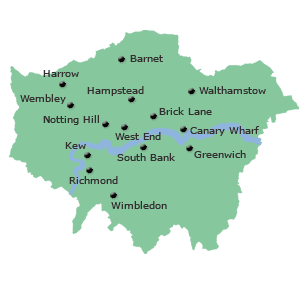
Millions of patients will soon have access to more appointments closer to home, speeding up the treatment process, as part of a newly announced plan aimed at reducing hospital backlogs.
Key Highlights of the Plan:
- Millions of New Appointments: The initiative aims to increase the number of appointments significantly, ensuring patients get faster care.
- Expanded Access: Up to 500,000 additional appointments will be available annually through expanded Community Diagnostic Centres (CDCs) and newly opened or upgraded surgical hubs.
- Greater Patient Choice: Measures will be introduced to allow patients more control over follow-up care, along with the use of technology to free up an additional one million missed appointments.
- Efficiency Focus: The reforms are part of the government’s broader Plan for Change, which seeks to improve services for working people.
Reducing the waiting list backlog
The government’s priority is to address the current backlog of 7.5 million patients waiting for treatment, aiming to restore the NHS’s 18-week standard for planned care. Meeting this target will reduce the time millions of patients spend in limbo, unable to resume their normal lives.
Currently, many patients face long delays and inconvenient referrals, while inefficiencies in care contribute to wasted time and resources.
Prime Minister Keir Starmer said: "This Government promised change and that is what I am fighting every day to deliver.
NHS backlogs have ballooned in recent years, leaving millions of patients languishing on waiting lists, often in pain or fear. Lives on hold. Potential unfulfilled.
This elective reform plan will deliver on our promise to end the backlogs. Millions more appointments. Greater choice and convenience for patients. Staff once again able to give the standard of care they desperately want to.
This is a key plank of our Plan for Change, which will drive growth that puts more money in people’s pockets, secures our borders and makes the NHS fit for the future so what working people live longer, healthier, more prosperous lives".
Health and Social Care Secretary Wes Streeting said:
"We inherited record long waiting lists, impacting patients’ lives and their livelihoods. Only the combination of investment and radical reform can turn this around, as we’re setting out today.
Our Plan for Change set an ambitious target to cut maximum wait times from 18 months to 18 weeks, and we will achieve it by bringing care closer to home and give patients more choice over their treatment.
The NHS should work around patients’ lives, not the other way around. By opening community diagnostic centres on high streets 12 hours a day, seven days a week, patients will now be able to arrange their tests and scans for when they go to do their weekend shopping, rather than being forced to take time out of work.
The reforms we’re launching today will free up millions of appointments, so the NHS can be there for us when we need it once again".
NHS chief executive, Amanda Pritchard, said: "NHS staff have worked tirelessly to bring down the longest waits, treating record numbers of elective patients last year, but with one in nine people currently on a waiting list it is right that we now go further and faster.
This ambitious blueprint will build on our progress and support hard working NHS staff to deliver faster routine care for patients with the aim of treating nine in 10 within 18 weeks by the end of this Parliament.
The radical reforms in this plan will not only allow us to deliver millions more tests, appointments and operations, but do things differently too – boosting convenience and putting more power in the hands of patients, especially through the NHS app".
The reforms set out today are focused on doing things differently by putting patients first, looking at their treatment in the round and empowering them with more choice and control so that care is more convenient and fits better into their lives.
Further measures include:
- Using the NHS app to give patients greater choice and control over their treatment. This includes making sure patients can get better access to information via the app, such as the details of their appointments, results and waiting times, and use it to book appointments in the location of their choice, with information about waiting times and patient satisfaction.
- Preventing unnecessary referrals. GPs will be funded to work with hospital doctors to get specialist advice before making referrals, so that more patients get the care they need without being referred onto the waiting list.
- Giving patients choice over non essential follow up appointments as part of a drive to free up around 1 million appointments a year for those who need them.
- Making more appointments available in the community instead of hospitals. More treatment for five specialties with particular pressure on waiting lists will also be made available outside of hospital through targeted reforms, including Ear Nose and Throat services, where around 30% of referrals currently made to secondary care could be provided in the community.
- Making convenience for patients a priority through the roll out of innovative ‘collective care’ approaches, for example, one stop clinics where patients can be assessed, diagnosed or reviewed on the same day; where appropriate, offering group appointments where patients with long term conditions may benefit from being supported together; opening ‘super clinics’ which bring together a wider range of clinicians to oversee patient care under the oversight of a consultant, increasing the number of patients seen in a day.
- Driving up patient experience through a set of national standards for elective care. We will publish minimum standards that patients should expect to experience in elective care, including giving patients a shortlist of providers to choose from and clarity on how long they are likely to wait. In turn these standards will make it easier to identify where performance is falling short and how to improve it.



































